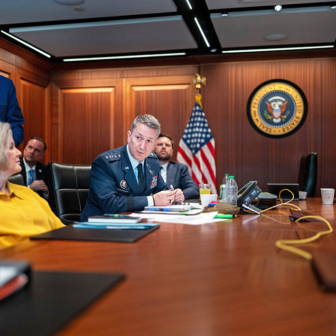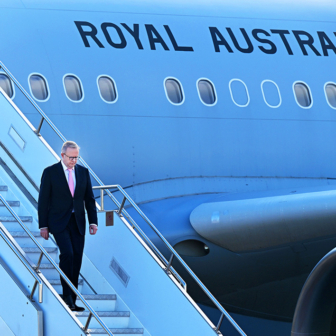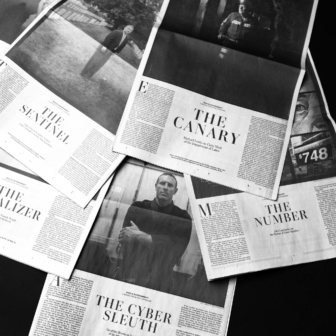Division has always been a fundamental element of Donald Trump’s politics. He understands perfectly how his words have the power to turn issues into partisan maelstroms, dividing public opinion and sowing discord, and he thrives on this.
The situation has increasingly worsened in the lead-up to the midterm elections, just two weeks away. Trump and the Republicans have repeatedly cast the Democrats as an “angry left-wing mob” and his media critics are “the enemy of the American people.” He has celebrated violence and nationalism at his rallies. He has also stoked fear about the large “caravan” of Central American migrants making their way to the United States’s border with Mexico.
Now come the consequences. We are seeing how the fears and hatreds stoked by his divisive rhetoric play out in the minds of those who would do harm to others for whom they have contempt.
Last week the nation was rocked as thirteen homemade pipe bombs were sent to people and organisations who had spoken out against Trump, including CNN, Democratic law-makers, former president Barack Obama, former first lady and presidential candidate Hillary Clinton, and liberal Jewish philanthropist George Soros. It is important to note that the targets of the attempted bombings have all been publicly attacked and demeaned by Trump.
A Florida man has been arrested and charged with a number of crimes related to the explosive devices. Reports indicate that he is a virulently partisan supporter of the president and that his social media rants and stickers plastered across his van attack Trump’s critics. It’s easy to see how the political climate allowed this man to play out his delusions.
Then, this past weekend, a man armed with an assault rifle and at least three handguns, shouting anti-Semitic slurs, opened fire inside a Pittsburgh synagogue, killing at least eleven and wounding others. The man, who has been arrested and charged, posted regularly on a social network popular with alt-right activists and white nationalists, his messages attacking Jews as the “enemy of white people” complicit in helping the “invaders” in the migrant caravan.
Mass shootings are a recurrent part of American life and when these occur in places of worship the shock is compounded. These are times when words from national leaders really matter. But to date there has been no effort after this shooting to invoke the presidential tradition of providing consolation and reaching out to unite the nation at such times of grief.
Despite these awful events and the rising public fear of violence, Trump persists with political campaigning in his usual style, with little moderation in his language. He shows little real interest in uniting the nation.
He has denied any link between his inflammatory language and such acts of violence: he thinks he has “toned down” his language and blames the media for failing to “set a civil tone and to stop the endless hostility and constant negative and oftentimes false attacks and stories.” In one tweet he said, “A very big part of the Anger we see today in our society is caused by the purposely false and inaccurate reporting… Mainstream Media must clean up its act, FAST!”
He has claimed that the media is blaming him for the mail bombs. Before dawn last Friday, he tweeted, “Funny how lowly rated CNN, and others, can criticize me at will, even blaming me for the current spate of Bombs and ridiculously comparing this to September 11th and the Oklahoma City bombing, yet when I criticize them they go wild and scream, ‘it’s just not Presidential!’”
On Friday, just after the arrest of a suspect in the mail bombings, he began a public appearance in the White House with an inclusive statement, read from a teleprompter, that political violence must never be allowed to take root in America. But then he expressed annoyance that the bombs sent to Democrats had taken the spotlight from his policies, and he laughed as the crowd chanted “lock him up” with reference to George Soros.
In Indiana and Illinois this weekend, only hours after the shooting in Pittsburgh, he quickly segued from condemning hate crimes and calling for unity to address “the hateful poison of anti-Semitism” to attacking and name-calling Democrats.
Trump and Pence have both stated that the death penalty should be enforced, but it’s clear that there will be no move on gun control. The offender had twenty-one guns registered to his name. Trump has suggested that the current gun-control laws had “little to do” with the shooting and suggested that the synagogue should have had armed guards. “If they had protection inside, the results would have been far better,” he said.
What is just as frightening is the extent to which these horrifying events have generated “false flag” theories from members of the conservative establishment who are willing to believe that the bomb attacks were staged to advance the political goals of the Democrats.
This week has highlighted how Trump’s wavering over condemnation of the deadly violence at last year’s white supremacist rally in Charlottesville was totally indicative of the man, his views and his modus operandi. Although he did eventually give a speech condemning racist hate groups, Bob Woodward’s new book Fear reports that he almost immediately told his aides that this speech was a big mistake.
Trump’s forecasting of violence if the Democrats win the midterms suddenly seems heavy with warning. •




